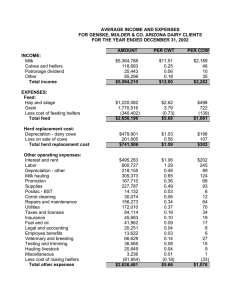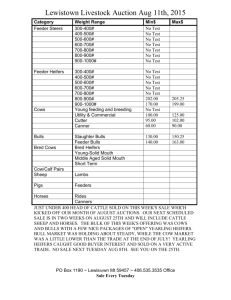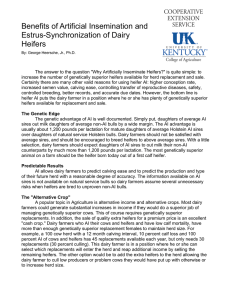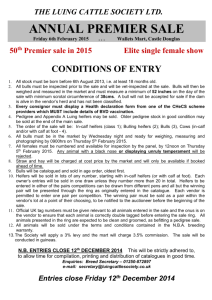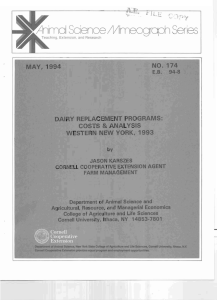Three Reasons Why Dairy Heifer A.I. is a Good Thing
advertisement
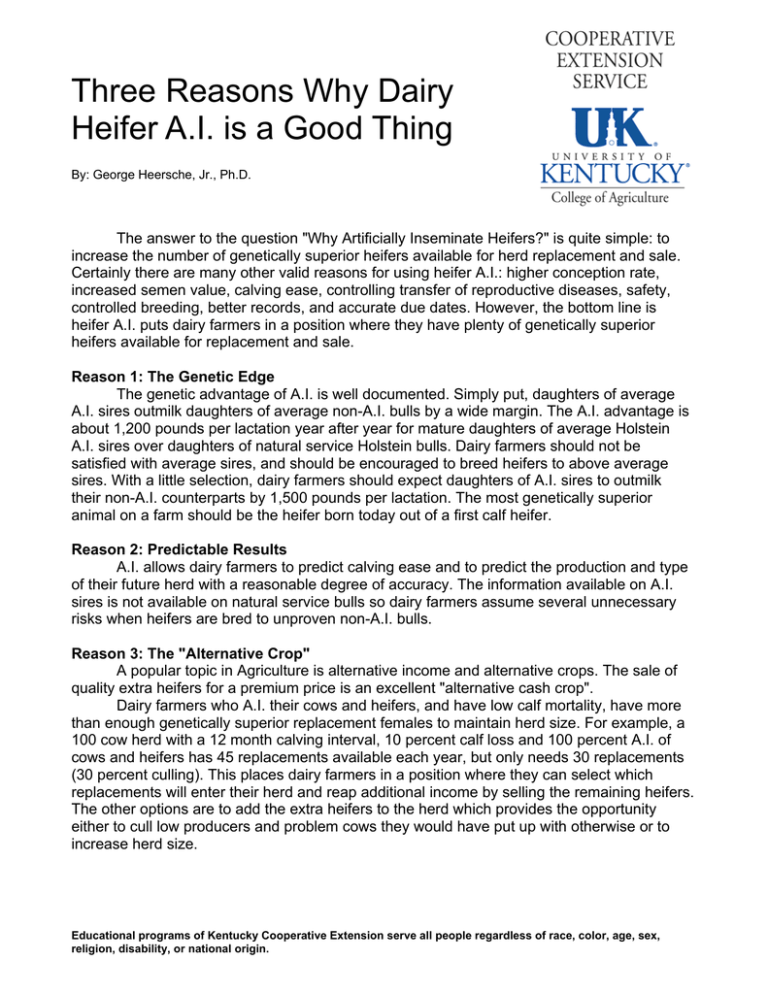
Three Reasons Why Dairy Heifer A.I. is a Good Thing By: George Heersche, Jr., Ph.D. The answer to the question "Why Artificially Inseminate Heifers?" is quite simple: to increase the number of genetically superior heifers available for herd replacement and sale. Certainly there are many other valid reasons for using heifer A.I.: higher conception rate, increased semen value, calving ease, controlling transfer of reproductive diseases, safety, controlled breeding, better records, and accurate due dates. However, the bottom line is heifer A.I. puts dairy farmers in a position where they have plenty of genetically superior heifers available for replacement and sale. Reason 1: The Genetic Edge The genetic advantage of A.I. is well documented. Simply put, daughters of average A.I. sires outmilk daughters of average non-A.I. bulls by a wide margin. The A.I. advantage is about 1,200 pounds per lactation year after year for mature daughters of average Holstein A.I. sires over daughters of natural service Holstein bulls. Dairy farmers should not be satisfied with average sires, and should be encouraged to breed heifers to above average sires. With a little selection, dairy farmers should expect daughters of A.I. sires to outmilk their non-A.I. counterparts by 1,500 pounds per lactation. The most genetically superior animal on a farm should be the heifer born today out of a first calf heifer. Reason 2: Predictable Results A.I. allows dairy farmers to predict calving ease and to predict the production and type of their future herd with a reasonable degree of accuracy. The information available on A.I. sires is not available on natural service bulls so dairy farmers assume several unnecessary risks when heifers are bred to unproven non-A.I. bulls. Reason 3: The "Alternative Crop" A popular topic in Agriculture is alternative income and alternative crops. The sale of quality extra heifers for a premium price is an excellent "alternative cash crop". Dairy farmers who A.I. their cows and heifers, and have low calf mortality, have more than enough genetically superior replacement females to maintain herd size. For example, a 100 cow herd with a 12 month calving interval, 10 percent calf loss and 100 percent A.I. of cows and heifers has 45 replacements available each year, but only needs 30 replacements (30 percent culling). This places dairy farmers in a position where they can select which replacements will enter their herd and reap additional income by selling the remaining heifers. The other options are to add the extra heifers to the herd which provides the opportunity either to cull low producers and problem cows they would have put up with otherwise or to increase herd size. Educational programs of Kentucky Cooperative Extension serve all people regardless of race, color, age, sex, religion, disability, or national origin.



